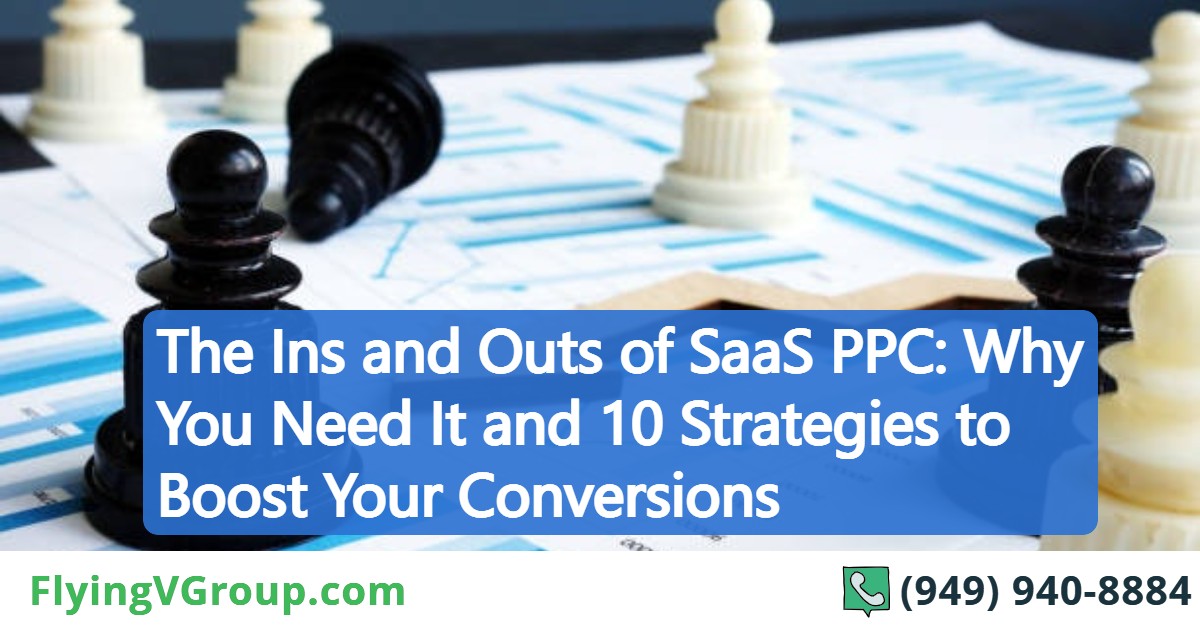Do you want to break through the highly competitive SaaS market to get your brand noticed?
According to the 2021 State of SaaSOps Report published by BetterCloud, the number of companies using SaaS solutions increased by 38% between 2020 and 2021.
The marketing world has evolved in recent years, so you’ll need to get creative with SaaS marketing strategies that can significantly impact your business.
(Source: Jelvix)
There are so many options for advertising SaaS, but if you’re looking to maximize your advertising budget, SaaS PPC (pay-per-click) advertising might be the right fit for you.
To help you maximize your investment in PPC advertising, we’ve put together this SaaS PPC guide to give you an overview of what will work best for your company.
We’ll cover:
- Introduction to SaaS PPC advertising
- How does SaaS marketing differ from traditional marketing?
- Why do PPC campaigns fail?
- 5 Reasons SaaS brands need PPC
- 9 Elements of a successful SaaS PPC campaign
- Top paid marketing channels for SaaS
Let’s begin!
Introduction to SaaS PPC advertising
SaaS PPC advertising can help your business get more customers and improve its conversion rate, but it can be confusing if you’re new to it. To help you get started with this powerful form of advertising SaaS, let’s go over the basics of SaaS PPC advertising and how to use it effectively.
What is PPC advertising?
(Source: Popup Smart)
PPC advertising, also known as pay-per-click (PPC) advertising, is an excellent way to promote and drive interest in your SaaS product or service. PPC ads offer many advantages to SaaS businesses, including affordability, real-time targeting of prospective customers, and effectively tracking ROI.
What is SaaS PPC advertising?
To grow the customer base in your subscription-based business, you’ll need to start creating SaaS advertising campaigns. Like Pay-Per-Click (PPC) ads help you bring potential clients to your website, SaaS ads can help expand your customer base.
These SaaS ad types are generally tailored toward online businesses with a lot of recurring revenue—namely software and apps.
The best way to get users to try your SaaS software product or convert existing customers into paying users is through targeted paid marketing.
SaaS product marketing offers two huge advantages over other marketing channels such as organic search, social media, and email marketing:
- it allows you to spend money on the keywords and phrases that your target audience searches on Google and other search engines;
- it gives you more control over the look of your ad campaigns than organic search does.
How Does SaaS Marketing Differ from Traditional Marketing?
How does SaaS marketing differ from the traditional marketing you might be used to?
(Source: Compare Soft)
Here are three ways:
1. Converting Customers is Quite Different in SaaS:
Prospects need to take a much more active role in closing a sale than they would in traditional B2B marketing. Instead of waiting for someone to call them, prospects need to actively seek out information about your product and decide whether or not it’s right for them.
2. There’s No Room for Error:
Unlike many traditional b2b marketing channels, which often have long sales cycles, SaaS ads must quickly convert if they must be successful.
There’s no room for error when setting up your SaaS ads or choosing keywords; you must ensure that every aspect of your SaaS PPC campaign is optimized before launching it into cyberspace.
3. You Don’t Always Know What Works:
Sometimes it seems like SaaS PPC ads are magic—you spend $100 and earn $1,000. Other times, however, things don’t go quite as planned. And unlike traditional marketing, where you might notice a decline in interest after a certain point, it can be difficult to pinpoint exactly why your ads aren’t converting if you are new to SaaS PPC.
The good news is that there are several tools to help you figure out what isn’t working and how to fix it. But you need to have the required expertise to leverage these tools.
Why Do PPC Campaigns Fail?
An effective PPC campaign aims to bring new business to your company, but it can be challenging for marketers who don’t know what they’re doing.
Let’s analyze 3 reasons why a SaaS PPC campaign may fail:
1) Poorly Written Ad Copy
Poorly written ad copy can result in click-through rates (CTR) being significantly lower than you expected. The biggest problem with poorly written ads is that they don’t provide enough information to encourage customers to learn more or take action.
(Source: Soft Progidy)
For example, if you leave out vital information in ads like service offerings or pricing information, you may not be able to convert your target audience.
Furthermore, if you aren’t using words that your target audience uses, they won’t be able to relate and may move on to another ad.
When writing ad copy for SaaS PPC campaigns, make sure you write like a human instead of a robot. For example, don’t use abbreviations or industry jargon unless your target audience will understand it right away.
Also, try to avoid buzzwords as they often come off as salesy.
2) Lack of Landing Page Optimization
The purpose of a landing page is to convert visitors into leads or customers. If you don’t provide enough information on your landing pages, you may miss out on potential conversions.
(Source: Influencer Marketing Hub)
For example, if you have an ad that says get a free trial but send people to a generic homepage, they may not know what to do next. So for your ad copy to be compelling, your landing pages must match what people see in ads.
3) No Conversion Tracking Code on the Website
When you have a PPC campaign, it’s essential to track which ads lead to conversions. Without conversion tracking, you won’t know which ads are working and which ones aren’t.
In addition, if you don’t add a conversion tracking code to your site, you’ll never be able to see where visitors came from or what they did after visiting your site.
5 Reasons SaaS Brands Need PPC
New research suggests that 70% of apps most companies use are SaaS-based.
(Source: Startup Bonsai)
Here are five reasons you should consider PPC advertising for your next campaign.
1. It’s Affordable:
It costs much less to acquire a customer through PPC than other SaaS digital marketing channels like social media or SEO.
2. It’s Measurable:
You can track how many clicks and conversions you get from each ad and optimize accordingly.
3. It’s Effective:
If done correctly, SaaS PPC campaigns can drive leads and sales to your website, mainly if you use them in conjunction with SEO or content marketing strategies.
4. It’s Targeted:
With SaaS PPC ads, you can target people who have already shown interest in your product or service by searching online for related terms.
5. It’s Fast:
Because you only pay when someone clicks on your ad, you don’t need to wait months for results; instead, you can see what works and what doesn’t almost immediately.
9 Elements of a Successful SaaS PPC Campaign
SaaS PPC campaigns can be tricky to run, but if you want to see success with them, then you’ll need to use the right strategies and be willing to test various approaches as you go along.
Here are 9 elements that will help you craft a successful SaaS PPC campaign that will bring in potential leads while keeping your costs low and maximizing your return on investment.
#1. Finding the Most Relevant Keywords
The most successful SaaS PPC campaigns use high-value keywords. Finding these keywords is crucial for successful marketing; without these, your ads will be ineffective, and you won’t get as many clicks or conversions. The trick is to know what kind of keyword you need.
Is it a highly commercial, generic keyword that anyone could type into Google? Or is it a specific search term with fewer monthly searches but much more qualified traffic?
#2. Split Testing Section Headlines
Whether you’re A/B testing your headlines or creating your versions of ads and landing pages, headline testing is crucial for a successful SaaS marketing strategy.
Remember that headlines are often more important than descriptions when doing conversion rate optimization for paid ads.
#3. Gaining Competitor Insights
Running SaaS ads for your own company allows you to compare performance with your competition. It’s valuable but can also be risky—while competitors generally don’t want you to learn from their strategies, they can use reverse engineering against you!
But if you’re thinking about competing in a particular niche or region, testing competitor performance is an efficient way of getting insight into market dynamics and competitiveness.
#4. Defining a Good Landing Page
Here’s how you can tell if your landing page is good: It converts.
If you’re marketing SaaS products, there should be an obvious path from your landing page (where people arrive on their way to buying) to a purchase. There shouldn’t be any confusion or extraneous choices that lead away from conversion.
#5. Building an Effective Email List
If you’re running a SaaS digital marketing campaign for your product, one of your core SaaS marketing strategies will be to build an email list. Email is still one of the most effective ways of marketing SaaS products.
(Source: Social Media Today)
You should leverage this SaaS marketing strategy as much as possible.
#6. Pricing Test Strategies
When creating a new SaaS product, the most important thing you can do is identify a suitable price for your customer. To do so, leverage what you know about them and their needs, and then test different pricing options.
Start with your ideal customer in mind; ask yourself: Who would pay $5 per month for my product? Who would pay $10 per month? Would they instead make an annual payment?
Then, build or find a landing page specific to each option and see which performs best.
#7. User ad Retargeting
Ad retargeting is an excellent way for companies with SaaS product marketing to boost their website traffic and convert more visitors into leads. By targeting users who have visited your site, you can catch their attention as they’re browsing other sites on the internet.
#8. Understanding Cost Per Acquisition (CPA) and Conversion Rate (CR)
Once you know your average customer acquisition cost, it’s time to put a dollar value on every new lead. The cost per acquisition, or CPA, is your total SaaS advertising spend divided by the total number of leads.
For example, if you spent $10K and got 1,000 new leads, your CPA would be $10. However, if you didn’t convert at least 10% of those leads into customers, your campaign wasn’t successful because it failed to hit its target return on investment (ROI).
For most industries, a good rule of thumb is that conversion rates should be between 5% and 15%. You can use Google Analytics or other analytics tools to measure how many people visit your site but are not converting into customers.
#9. Measuring ROI
To measure ROI, start by choosing your key performance indicators (KPIs), a set of specific metrics to determine whether a campaign is successful.
Once you’ve chosen your KPIs, begin collecting data. If you’re running campaigns across multiple platforms, try comparing similar ones across each platform and use metrics like conversion rate, cost per lead/conversion, and cost per acquisition (CPA) to compare performance.
Top Paid Marketing Channels for SaaS
In general, six paid marketing channels are commonly used by SaaS companies. These include:
- Display Advertising
- Remarketing
- Paid Search
- Social Media Ads
- Video Promotion
- Paid Content Discovery
We will cover what is needed to set up these campaigns in more detail and provide a high-level overview of how they work and when it makes sense to use them within your overall strategy. With that said, let’s dive into each section.
1. Display Advertising:
Display advertising is a term that refers to forms of online advertising which use banners, video, and other rich media formats.
There are generally two different options available when it comes to how you pay for these types of ads:
CPM (Cost Per Thousand Impressions)
With CPM campaigns, you pay each time your ad is displayed regardless if anyone clicks on it or not.
CPC (Cost Per Click)
With CPC campaigns, you only pay when someone clicks on your ad.
CPC is often seen as a better option than CPM because you only pay when someone has expressed interest in what you are offering.
2. Remarketing
Remarketing is a form of online marketing that allows you to display ads using cookies stored on users’ computers or devices. The best part about remarketing campaigns is that they will enable you to target people who have previously visited your website but didn’t convert.
Remarketing is commonly used with email marketing, social media, and display advertising. Start by setting up a dynamic retargeting campaign to serve ads to anyone who has recently visited your site. You can set up these campaigns using Google Ads, Facebook Ads, LinkedIn Ads, and many other platforms.
3. Paid Search
Paid search is a form of online marketing that allows you to display ads using keywords users search for in search engines like Google, Bing, and Yahoo.
The main advantage of paid search is that it can be very targeted and specific, which means you only pay when someone clicks on your ad or searches a keyword related to your business.
4. Social Media Ads
Social media ads refer to any type of advertising within social media platforms such as Facebook or Twitter.
(Source: Twitter)
These types of campaigns generally allow you to target people based on their interests and demographic information.
5. Video Promotion
Video promotion refers to any form of online marketing that involves videos. The best part about video promotion is that you can use it in conjunction with most other forms of online marketing, including display advertising, remarketing, paid search, and social media ads.
When creating video promotions, there are two main options available:
Hosted Videos:
With hosted videos, you upload your video content directly onto a platform like YouTube or Vimeo so users can view them without leaving their site.
Embedded Videos:
With embedded videos, you embed your video content into another website or webpage, which means viewers will have to leave that page to watch it.
6. Paid Content Discovery
Content discovery is a form of online marketing that allows you to display ads on websites or blogs. These campaigns generally target people who are already interested in your industry and are probably looking for more information regarding your business and services.
You can set up a campaign using Outbrain, Taboola, or Content.ad, which will serve ads along with articles they come across while browsing these sites.
You Can’t Do Everything Yourself!
A common misconception about digital marketing for SaaS is that you can manage all aspects of your SaaS PPC campaigns yourself. However, while some companies may be able to pull off such an endeavor, most will find themselves stretched too thin.
It’s essential to partner with a SaaS PPC agency that has experience in advertising and other forms of digital marketing for SaaS so you can benefit from their expertise without having to pay top dollar for it.
At Flying V Group, we’ll use our human and technological resources to get your SaaS brand noticed, drive conversions, and increase your ROI. Contact us.
SHARE THIS POST
Thank you so much for reading The Ins and Outs of SaaS PPC: Why You Need It and 10 Strategies to Boost Your Conversions . We really appreciate it! If you have any questions about our article, or can suggest any other topics you think we should explore, feel free to let us know.
Be sure to sign-up for our newsletter to receive monthly emails on all of the latest trends and happenings in the digital marketing space. You will also receive our FREE E-Book with the Amazing Marketing Tools for Powerful Business Growth. Sign-up below!
Also, if you received some value out of this article, please share with your friends or colleagues, or leave a comment/question below. We really appreciate you reading our blog and every share/comment means the world to us and allows us to continue producing valuable tools to help you grow your business!






0 Comments